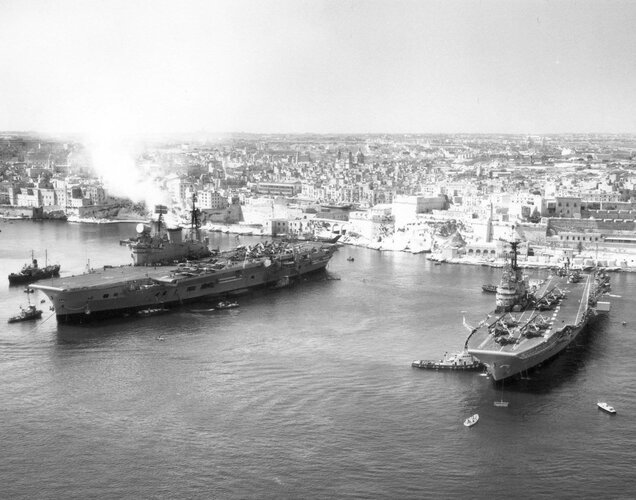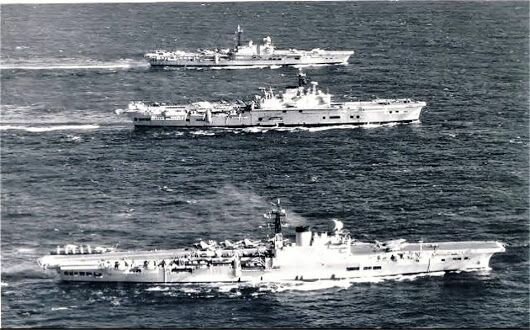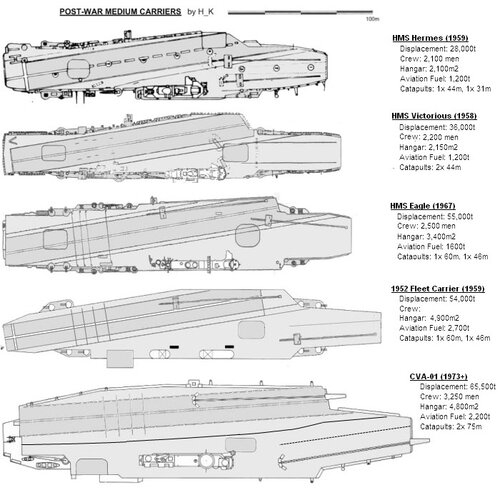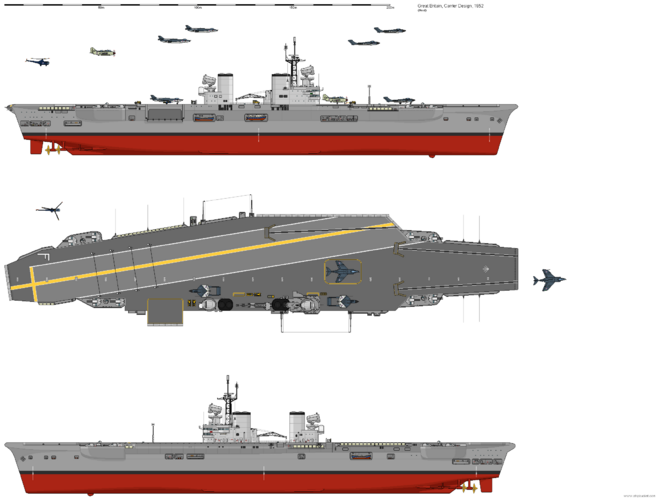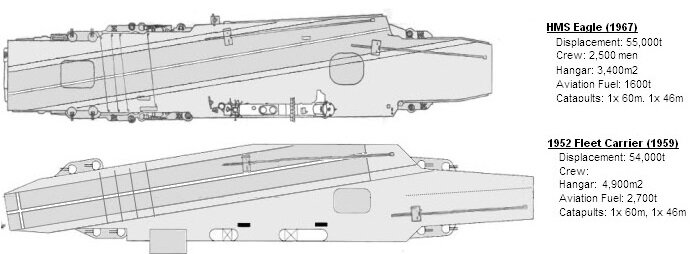Here we go..
Length :870ft fd, 815ft wl, 780ft bp. Without bridal catcher we'd add about another 3ft each end for the safetynetting.
Beam: 116ft
Width 160ft fd, overall ? (at least another 18ft (half the lifts 36ft)to cope with the deck edge lift and the othersides 'furniture' would take it higher).
Draught 33.5ft (the limit really for a number of reasons)
Displacement 53,150tons
Armament six twin 3" turrets, and some minor guns (such as signal guns etc...)
Machinary four sets of Y300 for 190,000shp in the tropics or 205,000shp on temperate conditions.
Speed of slightly over 32kts deep and clean, or slightly over 30kts deep and dirty (six months out).
Endurance of 6,000nm at 22.5kts.
Two catapults, BS mk4 one waist 199ft, one bow 151ft strokes. Both using 650psi
199ft stroke = 60,000lb to 113kts
151ft stroke = 35,000lb to 126kts
Four wires and mk13 arrestor engines. 30,000lb at 105kts, 35,000lb at 97kts, 40,000lb at 90kts, 45,000lb at 85kts.
Three lifts each to move 40,000lb in 20-25seconds, heavier loads at lower speeds. Each of centerline lift (not actualy centerline but slight biased to one side) 66ft by 44ft, deck edge 66ft by 36ft.
Two 984 radars, and the CDS on twin posidon computers, 48 track version with 8 intercept positions on the two deck AIO design as per Ark Royal. This with DPT.
Secondary short range set Type 992
Surface search set Type 974.
Type 963 CCA
TACAN beacon (AN/URN-3)
F.V.11 (VHF/DF)
IFF mk 10.
Type 176 Sonar.
Which I think is enough to be going on with for now.

